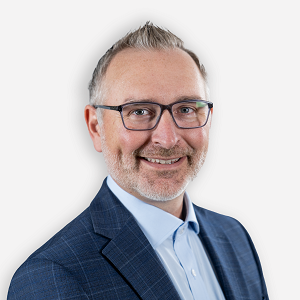Cooperatives across the country are taking a fresh look at employee motivation, with some moving toward a more holistic approach to compensation.
Point/Counterpoint: This story is part of Callahan’s new “Point/Counterpoint” series, examining credit union issues from multiple perspectives. Want a different take on incentives? Learn how two credit unions align staff efforts with organizational goals to boost the bottom line and enhance member value in “Incentives That Power Performance And Improve Outcomes.”
Top-Level Takeaways
-
- Capital Credit Union’s transition away from individual performance-based incentives has resulted in improved employee engagement, lower turnover, and better member service.
- Seattle Credit Union is still evaluating the effectiveness of incentive programs, balancing potential benefits with concerns about unintended consequences and ethical considerations.
- Both credit unions emphasize the importance of aligning compensation strategies with organizational values and member-centric missions.
As workplace dynamics and labor market realities continue to shift, credit unions are reassessing their approach to employee incentives.
For Capital Credit Union ($2.5B, Green Bay, WI), that means moving away from individual performance-based rewards toward a more comprehensive compensation strategy. For Seattle Credit Union (1.1B, Seattle, WA), the future of incentives is an open question yet to be answered.
Senior leaders at both cooperatives say they are coming to realize a traditional incentive structure might not align with their member-centric missions or foster the desired organizational culture.
Bad Behavior
Laurie Butz, president and CEO of Capital, joined the organization in November 2021 with more than 30 years of credit union and HR experience.
“I came on board with a history of working with incentive programs gone bad,” Butz says. “My experience has been that while the intention is good, unless there are clear guardrails and balancing elements, they incent bad behavior.”

According to Butz, Capital itself identified member experience issues arising from its incentive program. For example, MSRs predominantly returned calls related to loans because those inquiries had incentives attached. Such behavior led to member complaints about unresponsiveness.
“We were incentivizing loan volume, which led to an imbalance,” says Jonathan Probst, a 21-year Capital veteran and the cooperative’s chief lending officer. “Even though we need deposits, we weren’t incentivizing anything other than checking accounts.”
These observations led Capital Credit Union to form an incentive committee, whose investigation revealed potential ethical concerns and unintended consequences of the existing system. Today, individual incentives are history, an organizational bonus is in place, and base pay is higher.
Disparity And Change
The transition away from individual incentives wasn’t without its challenges. Butz notes some employees had come to rely heavily on incentive pay, which created significant disparities in total compensation among staff in similar roles. For example, one MSR might have made $10,000 a year on incentives while another made $200. Moving away from an incentive program could look like the credit union was trying to cut the salary of the one making almost $10,000.

To address these concerns, Capital conducted a comprehensive market analysis of every position, adjusting base wages to ensure employees remained whole after eliminating incentives. This process took nearly two years from start to implementation, and clear communication proved crucial to its success. Butz personally conducted all information sessions, whether live or recorded, to ensure consistent messaging and minimize misinterpretations.
“We had to talk through vision, our values as an organization, and our strategic direction,” Butz says. “This had to be in place before eliminating individual incentives and putting in a new compensation structure.”
Probst also emphasizes the importance of employee buy-in and where it originates.
“We spent a lot of time making sure the messaging was correct,” the Capital CLO says. “Ensuring leadership understood the direction and why we were moving that way was our first consideration.”
Better Service Without Incentives
The results of Capital’s shift away from individual incentives have been significant, the Capital executives say. Employee engagement scores rose from 75% to 84% whereas the member Net Promoter Score increased from 60 to 75, with a 95% satisfaction rating.
But that’s not all.
“When I started, our turnover rate varied between 19-21% on a 12-month rolling basis,” Butz says. “Our latest turnover rate is at 15.1%. Employees aren’t leaving as much anymore.”
The credit union also noted improvements in product knowledge and member service.
“Our employees now look holistically at members, teaching them the right products and how to make and save money,” Probst says. “This is a complete change for the better.”
A Mixed View In Seattle
Although Capital has moved decisively away from individual incentives, other credit unions are grappling with the question.

“I haven’t figured it out,” says Richard Romero, president and CEO at SCU since February 2012. “I’m not opposed to incentives or bonuses. I just have not been able to conclude, yet, whether they truly incent the behavior the organization needs.”
Romero sees both potential benefits and drawbacks in incentive programs, which is why SCU is currently reviewing its incentive structure.
“I think they’re good, especially when they’re sales incentives, product cross-sells, and such, but even those have their pitfalls,” Romero says. “They could incent an employee to recommend products not beneficial to a person because they’re incentivized for the commission.”
He points to the Wells Fargo debacle of the mid-2010s as an example of what could really go wrong.
Romero likes the idea of increasing focus where needed, and if the incentive is around service or specific product sales or revenue-increasing activities and metrics, he sees the benefit to the organization.
“The biggest question is human nature,” he says. “You can make all this incentive stuff mathematically sound, but the question is how it influences human nature. When you go to buy a car, you know the salesperson does not have your best interest in mind. That’s not the salesperson’s fault. It’s the way they get paid.”
As not-for-profit, member-owned institutions, credit unions are expected to behave differently, and in Romero’s view, they have.
“I’ve not experienced any kind of abuse or behaviors that make me want to steer away from incentives,” he says. “For me, it’s more about whether they become a part of your paycheck, like an expectation, or if they continue to be an incentive.”
Balancing Complexity And Fairness
CU QUICK FACTS
Seattle Credit Union
HQ: Seattle, WA
ASSETS: $1.1B
MEMBERS: 55,627
BRANCHES: 8
EMPLOYEES: 173
NET WORTH: 12.0%
ROA: -0.61%
One of the key challenges in designing effective incentive programs is balancing organizational goals with fair compensation practices — then competing for top producers.
“The market dictates a lot,” Romero says. “If we go to our real estate loan officers and tell them we’re getting rid of commission for a flat salary, typically higher than their current salary, it’s not helpful if competitors are paying lucrative commissions for the same work.”
This complexity extends to the timing and structure of incentives as well. Romero questions whether annual bonuses truly drive behavior or if more frequent rewards would be more effective. He also notes the potential for unintended consequences when incentivizing specific metrics without considering the broader impact on the organization and its members.
Both Capital and SCU are exploring alternatives to traditional cash incentives and regularly review and adjust as best they can.
CU QUICK FACTS
Capital Credit Union
HQ: Green Bay, WI
ASSETS: $2.5B
MEMBERS: 118,730
BRANCHES: 24
EMPLOYEES: 453
NET WORTH: 11.7%
ROA: 0.72%
Capital already has implemented an organizational annual bonus based on collective goals, including member experience, employee experience, and growth metrics.
Meanwhile, Romero, reflecting on research he conducted years ago as a college student working at a credit union, notes that non-cash incentives might be more effective in some cases.
“The result of my research was that cash incentives did not incent as well as time off or recognition,” he recalls from that work, which still influences his thinking to this day.
However, he also acknowledges that preferences can vary widely based on an employee’s life stage and financial situation.
“When I was 21 and starting in banking, I was told how important a 401(k) was, but you couldn’t convince me of that,” he says. “I was just trying to make ends meet and pay tuition. That’s all that mattered to me.”
No End In Sight
As credit unions continue to evolve their compensation strategies, the debate over employee incentives remains complex and nuanced. While some, like Capital, have found success in eliminating individual incentives in favor of higher base pay and an organization-wide bonus, others like SCU continue to weigh the pros and cons of their existing, perhaps more traditional system.
What’s clear is there is no one-size-fits-all solution. Credit unions must carefully consider their own culture, member needs, and competitive landscape when designing compensation systems.
“It’s so complicated that I don’t feel like it’s a question that can be answered with 100% certainty,” Romero says.
Ultimately, however, the goal for any compensation plan, with or without incentives, remains the same: to create a compensation structure that motivates employees, aligns with organizational values, and delivers the best possible service to members.
As the movement continues to grapple with these challenges, ongoing analysis, communication, and flexibility are key to developing effective strategies that balance the needs of employees, members, and the credit union itself.
- Get link
- X
- Other Apps
Comments
Post a Comment
Please no profanity or political comments.